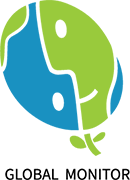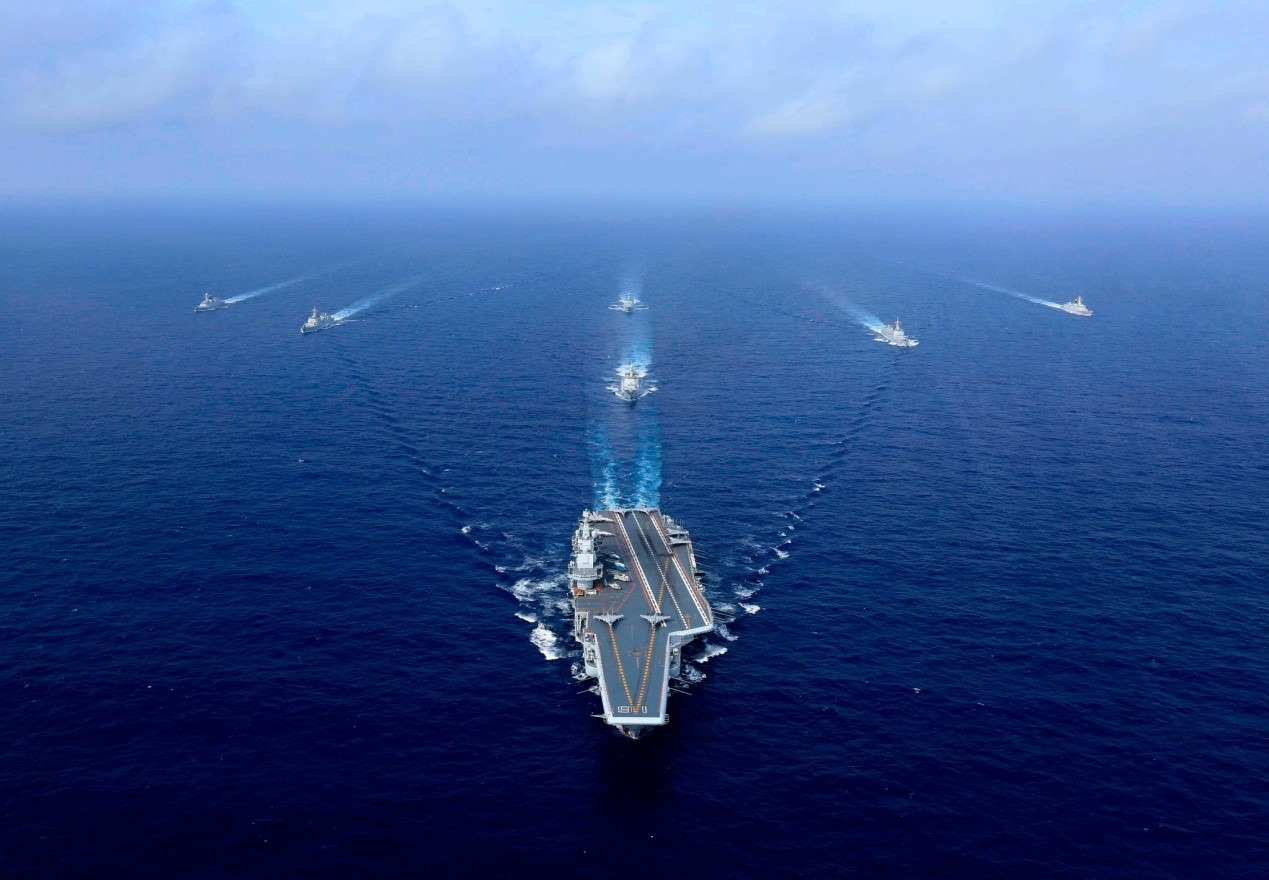
Qian Benli
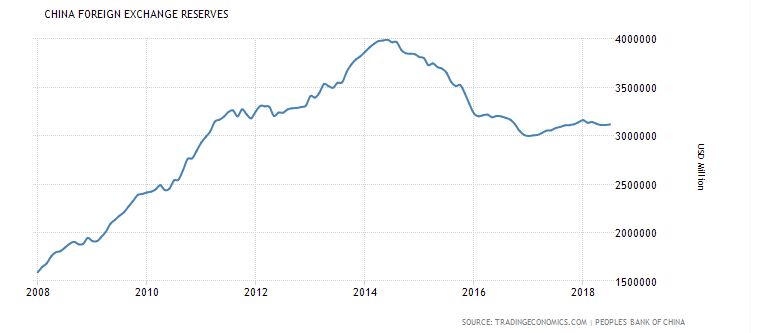
At the approach of the new millennium, the limited size of its domestic market, profit rate, and other factors (such as securing energy and resources supplies) started pushing China to invest its capital globally. In 1999, the government initiated the ‘Go-out Policy’ (also referred to as the ‘Going Global Strategy’) to promote Chinese investments abroad. The effort was remarkable. According to statistics[6] published by the United Nations Conference on Trade and Development (UNCTAD), mainland China’s outbound foreign direct investment (OFDI) in 2000 was only US$915.8 million; but in 2013, the year when China announced OBOR, this figure had increased dramatically to reach US$107,843.7 million; and last year’s figure was US$124,630 million. These figures do not include financial investments. It is worth mentioning that Hong Kong, where the OFDI is counted separately from mainland China, also serves as a tunnel for Chinese investments and its OFDI had unprecedentedly reached US$124,092.5 million in 2014.
In his classical work Imperialism and World Economy, Nikolai Bukharin argues that capitalism has two tendencies. First, it produces a tendency toward internationalization that drives capital to seek new investments, markets, resources, and cheap labor throughout the world. Second, it produces a tendency toward statification——capital seeks help and protection from home states in global competition and even to become state-capitalist firms.[7] Until recently, the majority of OFDI was from the state-owned enterprises (SOEs)——in 2012, the share of OFDI from China’s private firms only accounted for 9.5%[8]. Thus a state-led strategy to integrate China’s huge amount of OFDI was inevitable.
Officially China claims that OBOR has five major goals——policy coordination, facilities connectivity, unimpeded trade, financial integration and people to people bonds. Straightforwardly speaking, China wants to sign economic agreements with the Belt and Road countries to access new markets; to promote Chinese investment; to secure its supplies of food, resources and energy; to export Chinese products and services; to enhance the yuan’s role as a global currency; and to increase its soft power.[9] Such goals are not unreasonable ambitions——all the big nations in the world strive to achieve them. However, as I will show later in this article, the methods used to achieve them result in unwanted consequences.
A Mutated Agenda
Nevertheless, the launch of OBOR was a hasty and reckless move. In 2013, the two OBOR initiatives were first mentioned by Xi Jinping during his visits to Kazakhstan in September (the Silk Road Economic Belt) and Indonesia in October (the 21st-century Maritime Silk Road). Then a month later, OBOR was officially announced as a national strategy during a CPC central committee plenary session. It’s doubtful that this significant strategy could have been widely discussed within the party and government during such a short time, let alone for meticulous studies to have been conducted about its negative impacts on ordinary people in the Belt and Road countries and potential resistance.
Before becoming General Secretary in November 2012, Xi was quite a mediocre figure in the party, and this probably was one of the reasons that induced the party elders to pick him.[10]Thus Xi and his followers needed sound political and economic accomplishments to consolidate their power. Actually, some of the major projects of OBOR had been negotiated or started before its announcement in 2013. For instance, planning for the China-Pakistan Economic Corridor started during Musharraf’s regime[11]; the agreement on the construction of Gwadar Port was signed as early as 2001 by then Premier Zhu Rongji and phase one of construction was completed in 2006[12]. Packaging all the existing overseas projects into a shiny new box under Xi’s name was a quick way to gain credit.
With the expansion of Xi’s power and authority, OBOR has absorbed more and more resources. The China Development Bank and the Export–Import Bank of China are major sources of money. Last year the former promised that it would grant a special OBOR loan of 250 billion yuan in three years[13]; and the latter’s OBOR-related outstanding loans had reached 830 billion yuan by the end of the first quarter of 2018[14]. There are also other sources. In December 2014, the Chinese government pledged US$40 billion for the creation of the state-owned Silk Road Fund to provide investment to OBOR projects; in May 2017, Xi pledged an additional US$14.5 billion[15] into it. The Asian Infrastructure Investment Bank (AIIB) is also expected to provide funds for OBOR as well. Its articles of agreement were signed in 2014 (and went into force in December 2015) and the bank started out with an initial capital of US$100 billion.[16] The Bank of China has also issued four rounds of international bonds for OBOR with a total value of more than US$10 billion.[17]
One cannot help but doubt the profitability and effectiveness of China’s fast-growing overseas investment. In fact, in 2017 the government had to take a series of measures to enhance regulation. An improved and more rigorous system was introduced for auditing overseas investment by SOEs[18], and the finance ministry issued guidelines on the overseas investment of SOEs, amid a campaign to tighten controls on outbound investment and financial risks[19].
An important cause of this dilemma is that, just like the other ‘great plans’ proposed during the last six years——the Chinese Dream, Millennium Strategy of Xiong’an and Made in China 2025——OBOR has been closely integrated with Xi’s personal accomplishments. In 2017, the CPC even incorporated OBOR into its Constitution during its 19th National Congress.[20] Actually, during the first few years of OBOR, there were still critical voices and warnings from scholars within the system, such as Huang Yiping[21] from the China Center for Economic Research of Peking University and Zhang Yunling[22] from the Chinese Academy of Social Sciences. While a cult of personality around Xi has been constructed by his followers, doubts and challenges against OBOR have become taboos and OBOR projects have easily been given the greenlight from financial and government institutions.
A Hotbed of Corruption
The corruption scandals of OBOR projects have been exposed in a range of countries such as Malaysia[23] and Kyrgyzstan[24]. At home, the easily obtained greenlight and huge amount of money give the Chinese officials great opportunities to enrich themselves. According to a website run by the Supreme People's Procuratorate of China, corruption occurs in the processes of decision making, examination and approval, land acquisition, and material procurement of the OBOR projects.[25]
In 2017, an official announcement declared that the former director of the Fourth Bureau of the International Liaison Department of the CPC Cao Baiyu had been expelled from the party and was investigated by the Central Commission for Discipline Inspection. Cao had participated in China’s agricultural cooperation with African countries, which was later integrated into OBOR, and played an important role of contacting high-rank officials of the relevant governments. The announcement stated that he had participated in for-profit activities related to his position and earned remuneration, but did not give details.[26]
There is also a rumor[27] saying that Sun Zhengcai, who was a former member of the Political Bureau and Party Committee Secretary of the Chongqing Municipal, transferred 1 billion yuan from the OBOR funds to his mistress’s shell company in Hong Kong, which became one of the accusations his political enemies in the party used to down him.
Due to the untransparent nature of China’s anti-corruption campaign and the authority’s efforts to protect the image of OBOR, it is very hard to acquire the details of OBOR-related corruption or prove rumors. However, 170 senior executives of China’s state-owned enterprises (SOEs) have been prosecuted by the authorities since 2013[28] and many of these SOEs have been involved in OBOR projects. An article published by Foreign Policy describes how corruption is conducted within China’s SOEs:
… After terms are reached with a host country, funds are transferred directly into the Beijing-based bank accounts of China’s state-owned enterprises, which build the project often with Chinese materials. This is a model Beijing has employed extensively in Africa. Once Beijing’s political blessing for a project is communicated via funding from its policy banks, China’s national- or provincial-level state-owned enterprises build it, often with little or no political or financial risk assessment or market research.
…
Although most of the cash will never leave China, the sheer quantity of equipment and materials, such as steel, concrete, and timber, needed to produce so many projects will provide ample opportunity for pilferage and other types of on-site malfeasance. Indeed, Chinese firms operating in systemically corrupt business and regulatory environments may find it impossible to gain the necessary local support without greasing palms. Corruption could also come via kickbacks or bribes to loan officers from self-interested firms or officials, padding purchase orders, or cut-rate building materials…[29]
Inadequacy at Home
Even if individual corruption is not considered, so far OBOR is making the state lose money rather than bringing back profits. This is understandable because most infrastructure projects are long-term investments. Although steel, concrete and machinery made in China are now sold to OBOR countries, they are paid for with loans provided by China. Moreover, in some cases the CPC would rather gain the control of the roads, railways or ports China builds in the OBOR countries than get the money and interest back——Hambantota Port in Sri Lanka is a perfect example[30].
Some political dissidents also argue that members of the Chinese ruling class are using OBOR as a mean of money laundering[31] or even to secretly transfer national wealth overseas in preparation for their lives after the collapse of the CPC regime[32].
Again, there is no concrete evidence to prove these conspiracy theories. However, the Chinese government did censure some private companies that were taking the opportunity to transfer assets abroad.[33]
The most notable example is Wanda Group, which was established by the former richest man in China, Wang Jianlin. During the last several years, Wang sold 80% of Wanda’s domestic assets and spent more than 250 billion yuan buying overseas assets.[34] This strategy eventually irritated the Chinese government. In 2017, Wang had to make the decision to “put the main investment in China”[35] and by the beginning of 2018 Wanda had sold 200 billion yuan worth of overseas assets[36].
Anyhow, investing too heavily overseas would inevitably exacerbate inadequacy at home. In the first week of September this year, a protest organized by parents of primary school students in an inland city called Leiyang broke out and the heartbreaking video of a little girl crying for her arrested father quickly shocked China’s social media.
The direct trigger of this protest was the provincial order to cut class sizes. However, due to the lack of resources in Leiyang’s public schools, the local government had to transfer around 10,000 pupils to a private school with much more expensive fees and problematic dormitories.[37]

Images from the Leiyang protest. Source: YouTube[38].
This incident is a miniature of China’s domestic economic hardship. According to a recent Wall Street Journal article, Leiyang had racked up 2.464 billion yuan of outstanding debt at the end of 2017, or 111% of revenue.[39] Government spending on areas such as education, medical care and social welfare were inevitably affected. Another article pointed out in June that the city’s educational resources were insufficient, and the phenomenon of oversized classes was worsening.
The incident in Leiyang is just the tip of the iceberg. The pension insurance deficit in Heilongjiang Province [40] and the PLA veterans’ dissatisfaction with their scanty allowances from government[41] reflect China’s domestic financial deficiency as well.
Besides, in order to contain the social unrest caused by these dissatisfactions, Beijing has to spend more and more on internal security——in 2017, it accounted for 6.1% of government spending, which translates into US$196 billion.[42] Obviously, protests like the one in Leiyang will not happen in the first place if Beijing had used some of the money invested overseas for building public schools and hiring teachers; it would also save money from paying cops to repress the protesters.
Military Build-up and “Wolf Warriors”
The mega construction and infrastructure projects China invests in overseas require the Chinese state to make considerable efforts to protect its assets and personnel from various direct threats such as pirates, local warlords and China’s rivals.[43]In order to contain China, the Obama administration planned the so-called ‘pivot to Asia’ strategy as early as in 2012, which included redeploying 60 percent of the US Navy to the region. Thus military build-up, especially for a modernized blue-water navy, has become necessary for China’s capitalist development.
The result is the second largest navy (in terms of tonnage) in the world. China has built more than 100 warships and submarines in the last decade, which means it now has a total of 317 warships and submarines in active service, outnumbering the 283 of the U.S. navy.[44] And this is an on-going trend. At least two aircraft carriers and eight Type 055 ‘super destroyers’——which are as big as the cruisers of the U.S. navy, were under construction at the time of writing this article.

The formation of the Liaoning——China’s first aircraft carrier, at sea in April 2018. Source: The New York Times. Agence France-Presse—Getty Images.
Although the over-all technology level and combat experience of the PLAN are still behind the U.S. navy, its stupendous size still gives Beijing confidence to act in a high-profile way in the disputed waters. One example is the construction of artificial islands in the South China Sea and the relevant naval frictions around them.[45]
China’s military build-up and aggressiveness has inevitably exacerbated the arms race in this region. In 2017, South Korea increased its defense spending by 4%, hitting a record of US$36.5 billion. Japan also signed an unprecedented defense budget of US$43.6 billion, while Prime Minister Abe has set a 2020 deadline for revising Article 9 of the Constitution.[46] The other regional players who are vigorously sharpening their gears include India, Taiwan, Australia and Vietnam.[47]
Nevertheless, the strongest response comes from the United States. In May 2018, America renamed the U.S. Pacific Command as the U.S. Indo-Pacific Command, something which has been interpreted by analysts as a change to counter China’s influence in this region. Now nearly 60 per cent of the US surface ships and over 60 per cent of US submarines have been deployed in this region.[48]
As the biggest imperialist power in this region and in the world, America must be the first to be blamed for this round of arms race. However, we also have to recognize that China’s enthusiastic military expansion for challenging and even replacing the former’s dominance has increased the risk of war.
If Beijing continues the expansionist strategy, it would have to spend more on the military build-up to protect its overseas interests, especially after the recent unyielding speech given by US Vice President Mike Pence[49]. However, in the current economic situation, further increasing military spending means cuts to education, social welfare or other public spending, which will eventually cause more mass incidents like the one in Leiyang.
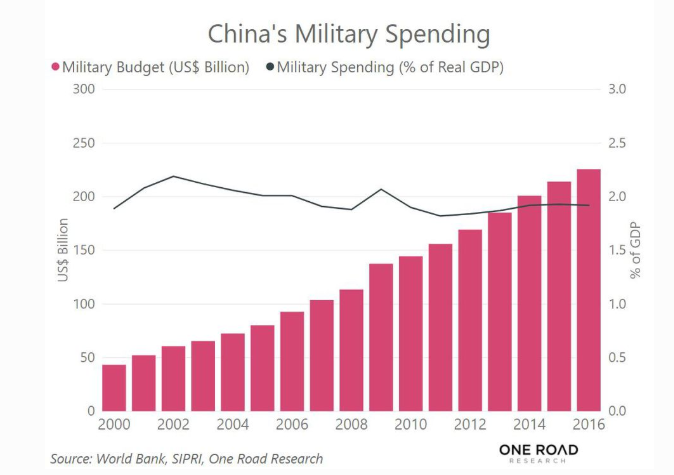
On the other hand, China’s overseas expansion is a crucial part of the propaganda that is boosting the party’s authority and popularity. Two recent popular movies, Wolf Warrior 2 (2017) and Operation Red Sea (2018), both tell stories of Chinese soldiers safeguarding China’s national interests in Africa. Wolf Warrior 2 includes a scene where in order to protect its citizens, a destroyer of the Chinese navy fires cruise missiles to attack targets located in the territory of a sovereign state that is not at war with China. In the other movie, a special force squad of the Chinese navy is sent into a country where a coup d’état is occurring.
The official newspaper of the CPC, the People’s Daily, praised Wolf Warrior 2 for showing “Chinese-style superhero to the world” and for how it “arouses the patriotic enthusiasm of many people”.[50] Companies, government departments and even schools organized for their employees or students to watch this movie; in some cases attendance was even compulsory. The result was that this movie was the seventh highest-grossing film of 2017 at US$874 million.[51]
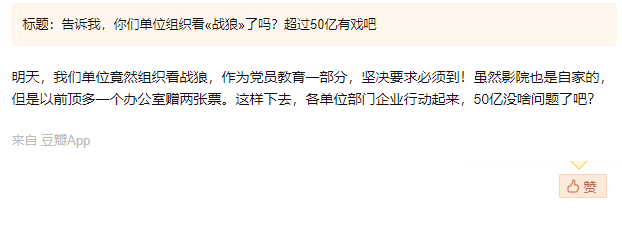
Picture Above: People post on China’s social media saying that their department gave free movie tickets for Wolf Warrior 2 to its employees and demanded compulsory attendance.
As an internet phenomenon in China, people who dislike nationalist fanaticism also call the pro-government nationalists “wolf warriors” in an ironic way. The reporter from China Central Television, who interrupted a critic of the Chinese government at the British Conservative Party’s annual conference and slapped a volunteer[52], for instance, was satirized by some Chinese netizens as a “wolf warrior-type journalist”[53].
However, some online speeches by unofficial “wolf warriors” are very extreme (such as advocating a nuclear attack against Japan) and contrary to the peaceful image of OBOR that the CPC is trying to create. Besides, if Xi’s government could not adhere to the nationalistic and tough stance he has promised, the anger of “wolf warriors” might backfire on their masters.
The rise of xenophobia reflects this dilemma faced by the party. In order to achieve the soft power building goal of OBOR, China now hosts a large number of international students from OBOR countries——in 2017, they numbered 317.2 thousand, or 64.85% of the overall international students in China[54]. They enjoy much better government benefits than China’s domestic students, such as higher scholarships[55], better dorm rooms[56] and more studying resources[57]. The inadequacy at home and of the way that this seems to oppose “China First” has made “wolf warriors” become xenophobic against people from OBOR countries. For example, a lot of online speeches blame international students from Africa for having caused a large increase in AIDS cases in China.[58]
Purge Instead of Prosperity
As the frontier and hub of the Silk Road Economic Belt (One Belt), Beijing has promised to bring prosperity and stability to Xinjiang Uyghur Autonomous Region (XUAR).[59] In some ways this is being achieved. XUAR’s average annual GDP growth from 2012 to 2016 was 9.3 percent, higher than the national level.[60] In 2017, investment in fixed assets in XUAR was the highest in China and more than 50,000 companies had been established or had branches set up there.[61]
However, for the national minorities in this region, the story is quite different. Recently, the Office of the United Nations High Commissioner for Human Rights (OHCHR) examined a report about XUAR submitted by human rights organizations, and accused China of holding as many as a million Muslims in concentration camps.[62] According to this report:
…The government has implemented militarized security measures, invasive policing, and community surveillance, including through “big data analytics”; forced hundreds of thousands of people into “re-education” camps; and drastically restricted ethnic language, culture, and religion…
These discriminatory security measures in Xinjiang are dictated from the top: Chinese Communist Party (CCP) General Secretary and the Chinese President Xi Jinping declared in May 2014 that the government would embark on a nationwide counter-terrorism campaign, but largely focused on China’s western regions. Xi Jinping stated that China must “construct walls built with copper and iron, knit nets reaching the heavens and earth” by “strongly boosting police readiness through mass surveillance and mass management” in order to “harshly battle against violent terrorist activities.” Regional stability and State control in Xinjiang is critically important for the success of Xi’s “Belt Road Initiative,” for which the XUAR is the primary land route for trade and investment in Central and South Asia, Europe, and the Middle East. Construction of a pervasive security infrastructure in Xinjiang, which began as early as 2009, has greatly accelerated since 2016, after Xi appointed Chen Quanguo as the new Communist Party Secretary for the region.[63]
In response to this report and the consecutive international criticism, the CPC launched a PR campaign to whitewash the re-education camps. In September, the Chinese Foreign Minister Wang Yi said in New York that the 20 million people in XUAR “support the measures taken by their government because they now feel safe and secure, and they can have a good sleep at night”.[64] Hu Xijin, who is the chief editor of the Global Times and infamous for his servile speeches, also posted the ‘happy life’ of a Uighur woman in one of the re-education camps on his social media account.[65] Another article of the Global Times describes more benefits of the camp life: jobs, decent income, poverty alleviation, tidy accommodation, etc.[66] However, Chinese netizens ironically connect this story to the well-known slogan on the entrance of Auschwitz——‘Arbeit macht frei’, which means ‘work sets you free’ in English.[67]
It’s true that incidents of violence and terrorism have increased in XUAR in recent years, but they are largely caused by the displacement of Muslim communities and the ‘aggressive attempts to assimilate Uyghurs into Han culture through targeted educational and work programs that incentivize the learning of Mandarin and integration into the Chinese state’s vision of modernization’[68].
Just like the resistances against land grabbing and forced demolitions carried out by ordinary Han Chinese in other parts of China, national minorities in XUAR also fight back to defend their home, and often in more intense and determined manners. So Beijing has to repress them more brutally. However, XUAR is also the experimental field of China’s 21st century authoritarianism. Many of the security measures that have been used there first[69]——big data, facial recognition, iris recognition and mobile phone checking machines——have also been implemented in other parts of China. Thus, it won’t be a surprise if ‘re-education’ camps are constructed in other provinces in the future.
XUAR’s story shows that in the eyes of the rulers of China, ordinary people are sacrificable for the ‘great goals’ of OBOR. Any person with conscience must admit that no economic achievement or national ambition can justify these atrocities.
Conclusion
Last year, the Xinhua News Agency said that OBOR has already made 76 major achievements and had more than 270 specific results, which included all sorts of international treaties, cooperation, projects, funds and aids.[70] This year is the fifth anniversary of OBOR and the propaganda machine of the CPC has produced a lot of articles to praise its greatness. However, they hardly ever mention any benefit brought back to the Chinese people. No figure about any relevant increases in terms of jobs, foreign exchange reserves or domestic living standards has been found. Maybe it’s too slapdash to conclude that there are no significant positive domestic consequences, but the reality in today’s China——economic slowdown, social instability and intensified repression, shows that OBOR has not been able to push the country in a bright direction.
[1] Kynge, James. China’s Belt and Road difficulties are proliferating across the world, The Financial Times, July 9, 2018. https://www.ft.com/content/fa3ca8ce-835c-11e8-a29d-73e3d454535d.
[2] Mukherjee, Andy. No Chinese Belt, Road or Bedrooms for Mahathir’s Malaysia, The Washington Post, August 28, 2018. https://www.washingtonpost.com/business/no-chinese-belt-roador-bedroomsfor-mahathirs-malaysia/2018/08/28/57c6c7ea-ab2b-11e8-9a7d-cd30504ff902_story.html?noredirect=on&utm_term=.0101015e2fda.
[3] News clip. Mahathir warns China against 'new version of colonialism', The Financial Times, August 28, 2018. https://www.dailymotion.com/video/x6sile8.
[4] Lee, Robin. A People’s Forum on OBOR and BRICS meets in Hong Kong, Borderless Movement, September 5, 2017. https://borderless-hk.com/2017/09/05/a-peoples-forum-on-obor-and-brics-meets-in-hong-kong/.
[5] Trading Economics website. China Foreign Exchange Reserves 1980-2018. https://tradingeconomics.com/china/foreign-exchange-reserves.
[7] Bukharin, Nikolai. Imperialism and World Economy. https://www.marxists.org/archive/bukharin/works/1917/imperial/index.htm.
[8] Alon, I; Wang, H; Shen, J; Zhang, W. Chinese state-owned enterprises go global, Journal of Business Strategy, November 18, 2014. https://www.researchgate.net/publication/270509338_Chinese_state-owned_enterprises_go_global.
[9] Borderless Movement. China’s Overseas Expansion: An Introduction to its One Belt, One Road and BRICS Strategies, 2017. https://drive.google.com/file/d/1XohOL_srTM9JJbWZogeKgbjdFUMNodth/view.
[10] Agency Staff. NEWS ANALYSIS: Xi Jinping’s stunning power grab means all bets are off, Business Day, March 12, 2018. https://www.businesslive.co.za/bd/world/asia/2018-03-12-news-analysis-xi-jinpings-stunning-power-grab-means-all-bets-are-off/.
[11] Zaman, Qamar. Politicians hit out at 'unfair' Pakistan-China Economic Corridor, The Express Tribune, April 22, 2015. https://tribune.com.pk/story/874049/politicians-hit-out-at-unfair-pakistan-china-economic-corridor/.
[12] Anonymous. Gwadar Port: 'history-making milestones', Dawn, April 14, 2008. https://www.dawn.com/news/297994/gwadar-port-history-making-milestones.
[13] Xinhua News Agency. 国开行:用三年左右落实2500亿元“一带一路”专项贷款, June 1, 2017. http://www.xinhuanet.com/fortune/2017-06/01/c_1121071832.htm.
[14] 王恩博. 中国进出口银行支持“一带一路”建设贷款余额超8300亿元, 中国新闻网, June 14,2018. http://www.chinanews.com/fortune/2018/06-14/8538239.shtml.
[15] Chen, Yawen. China pledges $124 billion for new Silk Road as champion of globalization, Reuters, May 14, 2017. https://www.reuters.com/article/us-china-silkroad-africa/china-pledges-124-billion-for-new-silk-road-as-champion-of-globalization-idUSKBN18A02I.
[16] Zheng, Yangpeng. Multination Asian bank plans capital of $100 billion, China Daily, June 30, 2014. http://www.chinadaily.com.cn/china/2014-06/30/content_17623234.htm.
[17] Bank of China website. 中国银行成功发行32亿美元“一带一路”主题债券, April 11, 2018. http://www.bankofchina.com/aboutboc/bi1/201804/t20180411_11961564.html.
[18] Xinhua News Agency. China toughens auditing of overseas investment by State-owned companies, China Daily, May 09, 2017. http://www.chinadaily.com.cn/business/2017-05/09/content_29268184.htm.
[19] Yao, Kevin; Jourdan, Adam. China issues rules to curb state firms' overseas investment, Reuters, August 2, 2017. https://www.reuters.com/article/us-china-economy-soe-idUSKBN1AI1BO.
[20] Xinhua News Agency. "Belt and Road" incorporated into CPC Constitution, The Xinhua Net, October 24, 2017. http://www.xinhuanet.com/english/2017-10/24/c_136702025.htm.
[21] 黄益平. “一带一路”不要成为国际版西部大开发, 新华网, August 11, 2015. http://www.hqrw.com.cn/2015/0811/33531.shtml. Accessed in October 19, 2018.
[22] 张蕴岭. 以“一带一路”战略促互利共赢, 中国社会科学网, January 28, 2015. http://www.cssn.cn/dybg/gqdy_gqcj/201501/t20150128_1495047.shtml. Accessed in October 19, 2018.
[23] Bristow, Michael. “一马基金”洗钱案涉中国因素,马中关系微妙转变, BBC, July 16, 2018. https://www.bbc.com/zhongwen/simp/world-44817356.
[24] 博讯新闻网. 吉尔吉斯前总理被控参与中国公司腐败案遭调查, June 1, 2018. https://www.boxun.com/news/gb/intl/2018/06/201806012035.shtml.
[25] 正义网. 加强国际反腐合作 让"一带一路"成为廉洁之路, May 19, 2017. http://www.jcrb.com/anticorruption/jrt/ffjrtd146_46465/index.html. Accessed in October 19, 2018.
[26] 多维新闻. 曹白隽被查牵出中国非洲粮仓,北京反腐又临新阵地, January 6, 2018. http://news.dwnews.com/global/news/2018-01-06/60033883.html.
[27] 甄树基. 孙政才被指假借一带一路10亿公款养情妇, RFI, September 19, 2017. http://cn.rfi.fr/%E4%B8%AD%E5%9B%BD/20170919-%E5%AD%99%E6%94%BF%E6%89%8D%E8%A2%AB%E6%8C%87%E5%81%87%E5%80%9F%E4%B8%80%E5%B8%A6%E4%B8%80%E8%B7%AF10%E4%BA%BF%E5%85%AC%E6%AC%BE%E5%85%BB%E6%83%85%E5%A6%87.
[28] 中国新闻网. 十八大以来国企落马官员三特征:双高、双低与双多, March 30, 2018. http://www.chinanews.com/sh/2018/03-30/8479606.shtml.
[29] Eisenman, Joshua; Stewart, Devin. China’s New Silk Road Is Getting Muddy, Foreign Policy, January 9, 2017. https://foreignpolicy.com/2017/01/09/chinas-new-silk-road-is-getting-muddy/.
[30] Abi-Habib, Maira. How China Got Sri Lanka to Cough Up a Port, The New York Times, June 25, 2018. https://www.nytimes.com/2018/06/25/world/asia/china-sri-lanka-port.html.
[31] 陈破空. 一带一路,竟深藏一层不可告人目的, 博讯新闻网, April 27, 2018. https://www.boxun.com/news/gb/pubvp/2018/04/201804270354.shtml.
[32] 曾节明. 习近平狂搞“一路一带”,用心何在?, 博讯新闻网, June 6, 2017. https://www.boxun.com/news/gb/pubvp/2017/06/201706061337.shtml.
[33] 马蓉. 中国对外投资整体健康,但有极少数企业趁机向境外转移资产--官员, Reuters, August 10, 2018.
https://cn.reuters.com/article/china-odi-assets-outbound-transfer-idCNKBS1AQ0OE.
[34] Anonymous. 万达王健林2500亿海外扫货,680亿国内甩卖背后…, 搜狐, July 20, 2017. http://www.sohu.com/a/158708849_467129.
[35] 刘旭明. 王健林海外投资“急刹车”, 联合早报, July 24, 2017. https://www.zaobao.com.sg/znews/greater-china/story20170724-781326.
[36] 新浪财经. 短短半年,万达抛售了2000亿海外资产!, January 20, 2018. http://finance.sina.com.cn/china/2018-01-20/doc-ifyqtwzv2258893.shtml.
[37] Zhuang, Pinghui. Hundreds clash with police amid protests over school campus switch in China, South China Morning Post, September 2, 2018. https://www.scmp.com/news/china/politics/article/2162435/hundreds-clash-police-amid-protests-over-school-campus-switch.
[38] 突发新闻. 湖南耒阳家长因抗议与警方爆发冲突 46人一度被拘押, YouTube, September 2, 2018. https://www.youtube.com/watch?v=VWE9CjVtFeo.
[39] Deng, Chao. A Broke Chinese City Is Raked Over the Coals by Furious Citizens, The Wall Street Journal, September 3, 2018. https://www.wsj.com/articles/how-a-chinese-citys-debt-woes-sparked-local-outrage-1535999473.
[40] 吴为. 13个地区养老金支付能力不足1年,黑龙江亏空超200亿, 新浪财经, December 10, 2017. http://finance.sina.com.cn/china/gncj/2017-12-10/doc-ifyppemf6155976.shtml.
[41] 储百亮. 中国多地爆发退役军人抗议活动, The New York Times, June 26, 2018. https://cn.nytimes.com/china/20180626/china-veterans-protests/.
[42] Chin, Josh. China Spends More on Domestic Security as Xi’s Powers Grow, The Wall Street Journal, March 6, 2018. https://www.wsj.com/articles/china-spends-more-on-domestic-security-as-xis-powers-grow-1520358522.
[43] 黄烨. “一带一路”防务成本, 国际金融报, April 6, 2015. http://paper.people.com.cn/gjjrb/html/2015-04/06/content_1550493.htm. Accessed in October 19, 2018.
[44] Myers, Steven. With Ships and Missiles, China Is Ready to Challenge U.S. Navy in Pacific, The New York Times, August 29, 2018. https://www.nytimes.com/2018/08/29/world/asia/china-navy-aircraft-carrier-pacific.html?rref=collection%2Fsectioncollection%2Fworld&action=click&contentCollection=world®ion=rank&module=package&version=highlights&contentPlacement=1&pgtype=sectionfront.
[45] Apps, Peter. How Beijing is winning in the South China Sea, The Japan Times, April 5, 2018. https://www.japantimes.co.jp/opinion/2018/04/05/commentary/world-commentary/beijing-winning-south-china-sea/#.W4zw1OgzbIU.
[46] Pham, Peter. The Arms Race in the South China Sea, Forbes, December 20, 2017. https://www.forbes.com/sites/peterpham/2017/12/20/the-arms-race-in-the-south-china-sea/#63ba3a84b1a8.
[47] Sengupta, Kim. An arms race is building between China and its neighbours as the world focuses on Trump and North Korea spat, Independent, January 17, 2018. https://www.independent.co.uk/news/world/asia/asia-arms-race-china-japan-india-us-north-korea-donald-trump-kim-jong-un-nuclear-weapons-a8164276.html.
[48] Anonymous. US Navy to have 60% surface ships in Indo-Asia Pacific region, The Economic Times, July 12, 2018. https://economictimes.indiatimes.com/news/defence/us-navy-to-have-60-surface-ships-in-indo-asia-pacific-region/articleshow/51778769.cms.
[49] YouTube video. Vice President Mike Pence's Remarks on the Administration's Policy towards China, October 4, 2018. https://www.youtube.com/watch?v=aeVrMniBjSc.
[50] Anonymous. 《战狼2》:横扫中国票房的民族主义动作片, BBC, August 5, 2017. https://www.bbc.com/zhongwen/simp/chinese-news-40840840.
[51] Wikipedia. Wolf Warrior 2. https://en.wikipedia.org/wiki/Wolf_Warrior_2.
[52] Anonymous. 央视记者孔琳琳在英国论坛涉打人引发的三大争议, BBC, October 2, 2018. https://www.bbc.com/zhongwen/simp/world-45717070.
[53] 中国数字时代. 【网络民议】战狼型女记者来了, October 1, 2018. https://chinadigitaltimes.net/chinese/2018/10/%E3%80%90%E7%BD%91%E7%BB%9C%E6%B0%91%E8%AE%AE%E3%80%91%E6%88%98%E7%8B%BC%E5%9E%8B%E5%A5%B3%E8%AE%B0%E8%80%85/.
[54] 胡浩. “一带一路”沿线国家来华留学人数持续增加, 新华网, April 30, 2018. http://www.xinhuanet.com/2018-04/30/c_1122764886.htm.
[55] 腾讯评论. “补贴外国留学生9万”就是教育先进?, September 3, 2014. http://view.news.qq.com/original/intouchtoday/n2905.html.
[56] 纸上建筑. 中国高校给留学生超国民待遇:别太过分!, 看中国, July 13, 2018. https://www.secretchina.com/news/gb/2018/07/13/864436.html.
[57] 朱三景. 在华外国留学生的特殊待遇,在宿舍优越, 侨报网, July 17, 2018. http://www.uschinapress.com/2018/0717/1136907.shtml.
[58] 新加坡头条. 黑人留学生放纵传染艾滋病!大学辅导员愤怒:黑人留学生在中国玩弄大量女学生!, July 5, 2018. https://toutiaosg.com/%E9%BB%91%E4%BA%BA%E7%95%99%E5%AD%A6%E7%94%9F%E6%94%BE%E7%BA%B5%E4%BC%A0%E6%9F%93%E8%89%BE%E6%BB%8B%E7%97%85%EF%BC%81%E5%A4%A7%E5%AD%A6%E8%BE%85%E5%AF%BC%E5%91%98%E6%84%A4%E6%80%92%EF%BC%9A%E9%BB%91/.
[59] Tan, Valarie. Beijing hopes 'One Belt, One Road' will deliver peace, prosperity to Xinjiang, Channel News Asia, June 13, 2017. https://www.channelnewsasia.com/news/videos/beijing-hopes-one-belt-one-road-will-deliver-peace-prosperity-to-8942156.
[60] Qian, Ding. China Cares: Xinjiang witnesses remarkable GDP annual growth rates, CCTV, October 31, 2017. http://english.cctv.com/2017/10/31/ARTI4LLMgWpsE3WEkdCcKAnX171031.shtml.
[61] Zhao, Lei. Xinjiang's GDP growth beats the national average, China Daily, October 20, 2017. http://www.chinadaily.com.cn/china/19thcpcnationalcongress/2017-10/20/content_33476166.htm.
[62] Dixon, Robyn. U.N. accuses China of holding more than a million Muslims in a secret web of detention centers, The Los Angeles Times, August 31, 2018. http://www.latimes.com/world/la-fg-china-uighur-20180831-story.html.
[63] CHRD; Equal Rights Initiative. Joint Civil Society Report Submitted to The Committee on the Elimination of Racial Discrimination for its Review at the 96th Session of the combined fourteenth to seventeenth periodic report of the People’s Republic of China (CERD/C/CHN/14-17) on its Implementation of the Convention on the Elimination of All Forms of Racial Discrimination. https://tbinternet.ohchr.org/Treaties/CERD/Shared%20Documents/CHN/INT_CERD_NGO_CHN_31915_E.pdf.
[64] 夏立民. 王毅:新疆两千万民众赞成政府做法, 德国之声中文网, September 28, 2018. https://www.dw.com/zh/%E7%8E%8B%E6%AF%85%E6%96%B0%E7%96%86%E4%B8%A4%E5%8D%83%E4%B8%87%E6%B0%91%E4%BC%97%E8%B4%8A%E6%88%90%E6%94%BF%E5%BA%9C%E5%81%9A%E6%B3%95/a-45705190.
[65] 多维新闻. 胡锡进现身新疆再教育营,接触女学员曝内幕, October, 21, 2018. http://news.dwnews.com/china/news/2018-10-21/60092290.html.
[66] Anonymous. 实地走访新疆职教培训中心:被西方挑刺的机构竟然是这样!, 环球网, October 21, 2018. http://world.huanqiu.com/exclusive/2018-10/13323410.html. Accessed in October 22, 2018.
[67] Anonymous. 中国政府在新疆对维族到底做了什么?有没有证据?, 品葱. https://www.pin-cong.com/p/146628/?s=147603. Accessed in October 22, 2018.
[68] Roberts, Sean; Kanat Kilic. China’s Wild West: A Cautionary Tale of Ethnic Conflict and Development, The Diplomat, July 15, 2013. https://thediplomat.com/2013/07/chinas-wild-west/?all=true.
[69] 米华健, 新疆:天罗地网下的监控世界, The New York Times, Fabray 5, 2018. https://cn.nytimes.com/opinion/20180205/china-surveillance-state-uighurs/.
[70] 新华社. “一带一路”高峰论坛270项成果清单公布, 中华人民共和国商务部网站, May 16, 2017. http://caiec.mofcom.gov.cn/article/jingmaoxinxi/201705/20170502575582.s….
